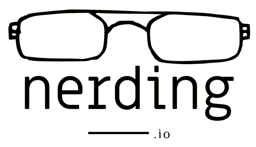Exploring Media Bias: Analyzing News Articles
Engage students in critical thinking and media literacy skills by analyzing news articles for bias and perspective.
Media Studies - 12th
title: 'Exploring Media Bias: Analyzing News Articles'
compliance: 'Common Core State Standards: CCSS.ELA-LITERACY.RI.11-12.1, CCSS.ELA-LITERACY.RI.11-12.2, CCSS.ELA-LITERACY.RI.11-12.6'
subject: 'Media Studies'
summary: 'Engage students in critical thinking and media literacy skills by analyzing news articles for bias and perspective.'
topic: 'Analyzing Media Bias and Perspective'
In this activity, students will explore the concept of media bias and perspective by analyzing news articles from different sources. Through this project, students will develop critical thinking skills, media literacy, and an understanding of how media influences public opinion.
Learning Outcomes:
- Know the definition of media bias and perspective
- Understand the impact of media bias on public opinion
- Develop critical thinking skills to analyze news articles
- Apply media literacy skills to evaluate sources
Methodology:
1. Introduction (15 minutes):
- Begin the activity by discussing the importance of media literacy and the influence of media on public opinion.
- Define media bias and perspective, providing examples to help students understand the concepts.
2. Research and Analysis (60 minutes):
- Divide students into small groups and provide each group with a set of news articles from different sources on a specific topic (e.g., climate change, immigration, gun control).
- Instruct students to read and analyze the articles, paying attention to the language used, sources cited, and overall tone.
- Encourage students to identify any potential biases or perspectives presented in the articles.
3. Group Discussion (30 minutes):
- Bring the class back together and facilitate a group discussion where each group shares their findings and observations.
- Encourage students to compare and contrast the different perspectives presented in the articles.
- Discuss the potential impact of media bias on public opinion and the importance of critical thinking when consuming news.
4. Reflection and Evaluation (15 minutes):
- Ask students to individually reflect on the activity and write a short paragraph discussing what they learned about media bias and perspective.
- Collect and review the reflections to assess students' understanding of the topic.
Resources/Materials Required:
- News articles from different sources (print or online)
- Whiteboard or projector for class discussion
- Writing materials for students
Instructions:
1. Begin the activity by introducing the concept of media bias and perspective, providing examples to help students understand the concepts.
2. Divide students into small groups and provide each group with a set of news articles on a specific topic.
3. Instruct students to read and analyze the articles, paying attention to the language used, sources cited, and overall tone.
4. Bring the class back together for a group discussion, where each group shares their findings and observations.
5. Facilitate a discussion on the potential impact of media bias on public opinion and the importance of critical thinking when consuming news.
6. Ask students to individually reflect on the activity and write a short paragraph discussing what they learned about media bias and perspective.
7. Collect and review the reflections to assess students' understanding of the topic.
By the end of this activity, students should:
- Know the definition of media bias and perspective
- Understand the impact of media bias on public opinion
- Develop critical thinking skills to analyze news articles
- Apply media literacy skills to evaluate sources
This activity aligns with the Common Core State Standards for English Language Arts, specifically CCSS.ELA-LITERACY.RI.11-12.1 (Cite strong and thorough textual evidence to support analysis of what the text says explicitly as well as inferences drawn from the text), CCSS.ELA-LITERACY.RI.11-12.2 (Determine two or more central ideas of a text and analyze their development over the course of the text, including how they interact and build on one another to provide a complex analysis; provide an objective summary of the text), and CCSS.ELA-LITERACY.RI.11-12.6 (Determine an author's point of view or purpose in a text in which the rhetoric is particularly effective, analyzing how style and content contribute to the power, persuasiveness, or beauty of the text).
 Take your blockchain skills to the next level with Nerding I/O - the ultimate learning platform for Solidity fundamentals. With engaging e-books, you'll master Solidity in no time. Purchase today and get 50% off with code MSXZCFR2V1. Join the blockchain revolution with Nerding I/O!
Take your blockchain skills to the next level with Nerding I/O - the ultimate learning platform for Solidity fundamentals. With engaging e-books, you'll master Solidity in no time. Purchase today and get 50% off with code MSXZCFR2V1. Join the blockchain revolution with Nerding I/O!